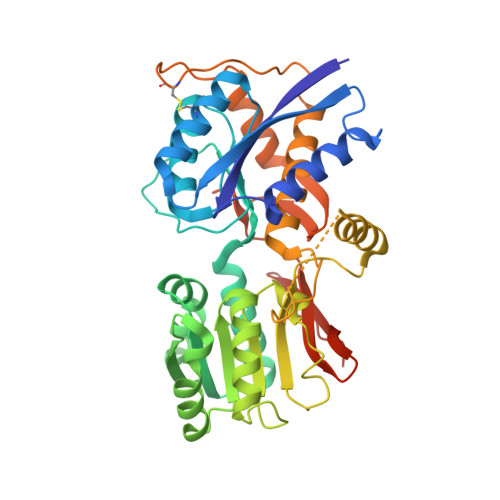The N-terminal domain of GluR6-subtype glutamate receptor ion channels.
Kumar, J., Schuck, P., Jin, R., Mayer, M.L.(2009) Nat Struct Mol Biol 16: 631-638
- PubMed: 19465914
- DOI: https://doi.org/10.1038/nsmb.1613
- Primary Citation of Related Structures:
3H6G, 3H6H - PubMed Abstract:
The amino-terminal domain (ATD) of glutamate receptor ion channels, which controls their selective assembly into AMPA, kainate and NMDA receptor subtypes, is also the site of action of NMDA receptor allosteric modulators. Here we report the crystal structure of the ATD from the kainate receptor GluR6. The ATD forms dimers in solution at micromolar protein concentrations and crystallizes as a dimer. Unexpectedly, each subunit adopts an intermediate extent of domain closure compared to the apo and ligand-bound complexes of LIVBP and G protein-coupled glutamate receptors (mGluRs), and the dimer assembly has a markedly different conformation from that found in mGluRs. This conformation is stabilized by contacts between large hydrophobic patches in the R2 domain that are absent in NMDA receptors, suggesting that the ATDs of individual glutamate receptor ion channels have evolved into functionally distinct families.
- Laboratory of Cellular and Molecular Neurophysiology, Porter Neuroscience Research Center, National Institute of Child Health and Human Development, Bethesda, Maryland, USA.
Organizational Affiliation:



















